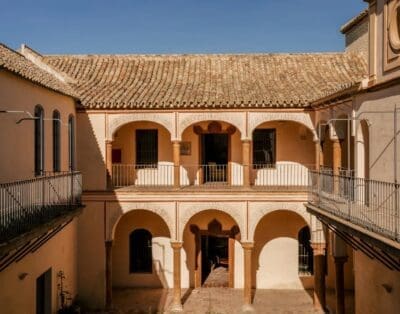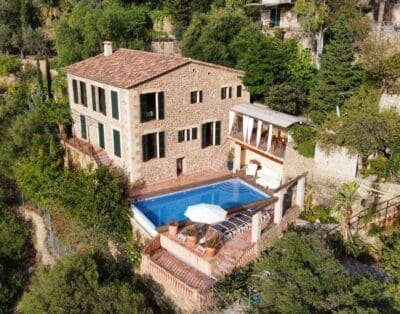White Peak – Derbyshire’s Whisky Distillery
As I made a left turn from the A6 in Derbyshire to visit White Peak Distillery located in the stunning Derwent Valley, I was transported to a bygone era, steeped in decades of industrial history. This locale evoked the ambience of an environment where workers might have toiled for 12-hour shifts, clocking out at the end of the day, covered in the grime of their labour, fatigued, and longing for a full plate of homecooked food. It held a certain charm, which resonated with me, as it must have with Max and Claire Vaughan. In 2016, they envisioned the transformation of a portion of this historic site into Derbyshire’s first craft distillery.
With the necessary financial backing secured from investors, Max, a native of the region, embarked on a year-long journey to convert the former Johnson & Nephew wire works into a fully operational distillery. This decision boasted several advantages from a sustainability perspective. It repurposed an existing structure, revitalising it, and safeguarding the long-term viability of this local landmark.
Located within a World Heritage site, White Peak Distillery is strategically positioned alongside the River Derwent, ensuring a reliable and plentiful water source, and a historic woodland. Max shared that they knew of a tree that had naturally fallen down in these woods and that they were seeking permission to use it to make a cask or two. This immediately spoke to me of how important provenance and keeping things local are to Max and Claire.
The first thing I noticed when I walked into the distillery shop was how friendly the staff were. That set the tone for my visit and is so important but so frequently overlooked. Looking around with a much-needed coffee I noted their commitment to enable customers to refill old bottles, a practice that should ideally be embraced by every craft distillery. The room, thoughtfully designed by Claire, showcases an array of upcycled elements, from an old door repurposed as a countertop to the truly remarkable ex-bourbon barrels transformed into pendant light fixtures. Their vision for these barrels has ignited a desire to commission similar pieces for my own home when I eventually have enough money for rooms of sufficient size.
As I went through the plush tasting room I entered the cathedral-sized still house, alongside a milling room and dunnage warehouse. It is an impressive sight with a mezzanine allowing you to get up close to the stills and spirit-safe. Further exploration led to an even more expansive dunnage warehouse, that is used for tastings during one of the warehouse tours.
The distillery was granted the necessary permits to use water from the adjacent River Derwent, continuing a tradition established by the original wire works. This water is instrumental in cooling their spirit condensers, after which it is returned to its source, only slightly warmer. Their calculations indicate that this eco-conscious practice conserves the energy equivalent of boiling 1,000 kettles daily – an impressive feat.
As you may have guessed, sustainability runs through every aspect of the business with a plastic-free packaging policy. I purchased their first release and it came packaged in a cardboard structure influenced by the nearby bridge, located around 50 meters from their building that goes over the river. This packaging not only conveys a sense of quality but also provides structural integrity and safety during transportation.
Their commitment to using locally sourced ingredients whenever feasible is very apparent. For example, they use yeast from Thornbridge Brewery to make their wort and occasionally use their old barrels, such as in the Necessary Evil. This is aged in barrels from the brewery that had previously held a stout of the same name, and filled within 72 hours of the brewery emptying it.
I often ask daft questions and have learnt not to get caught up in the absurdity of them. During my visit, I encountered a momentary period of brain fog when Max showed me a block of yeast. In an embarrassing instance of cognitive oversight, I asked Max, something along the lines of the logistics concerning Thornbridge Brewery’s delivery of the wort to the distillery. This question was simply stupid seeing that I am fully aware of how whisky is made and had previously witnessed the barley milling process and the active fermentation in the washbacks. My question could be likened to a motoring writer inquiring about the petrol used for refuelling an electric car. Just plain daft!
Virgin Oak – 50.5% and £67
An opportunity to taste the spirit in its purest form having been aged in ex-bourbon barrels before being transferred with a lower abv into virgin American oak. This would have been a balancing act to ensure that the wood does not dominate the palate, whilst retaining the “house style”. The lower abv means that the whisky interacts with the wood in a different way, primarily increasing the vanilla notes. The nose has pleasant aromas of grain, vanilla and marzipan, with a lovely spice on the palate complemented by rich fruits. I didn’t pick out any smoke from the peated barley in this, so think it must have been used as a seasoning with the intent of contributing to the overall flavour but staying in the background.
Caduro – 46.8% and £60
Similar to the Virgin Oak but using a combination of American and French oak that have previously held bourbon, and STR casks that had contained wine. The nose is very different, more lively and fruit-forward, with stewed apples and cinnamon coming to mind. The taste is a lot softer with overbaked apples, vanilla custard and cloves. The length has increased resulting in a fuller more rounded whisky.
Alter Ego – 51.5% and £65
Very similar in composition to the previous two releases but with different cut points during the distillation. That is the point at which the distiller diverts the new make spirit coming from the stills to the spirit receiver that will be casked. These are the heads, hearts and tails. The heads generally contain toxic compounds like methanol and the tails can have a bitterness to them and unpleasant aromas, the hearts being the sweet spot. By altering the cut points you can increase the complexity of the resulting whisky. Immediately on the nose, you can notice how much more of a barley character it has. Rich tea biscuits, vanilla and toasted almonds all feature. There is more spice on the palate, whilst being quite creamy. The peat is more pronounced, yet subtle, just hovering in the background. The flavours permeate for quite some time.
Necessary Evil – 51.3% and £67
I was really looking forward to tasting this. They have taken casks that previously held Thornbridge Breweries Stout, which themselves had previously been used to mature Pedro Ximénez sherry. The colour is lighter than expected but do not let that fool you. The nose is full of chocolate, vanilla, barley, smoke and well stout! There is a sweetness not present in the previous expressions and a greater depth of flavour and complexity. The stout really does shine through and works perfectly, dancing with the smoke.
I thoroughly enjoyed my visit to the distillery and hearing about their plans for the future. Without the tight restrictions Scottish distilleries have to abide by, White Peak is able to be innovative and forward in its thinking. They are able to experiment, push boundaries and release whiskies that excite. Perfect for whisky lovers like us. As with so many other English whisky distilleries, their spirit is still young but their outlook is mature. Expect truly spectacular whisky to come in future years when mature stocks are available to blend or make individual expressions of.
whitepeakdistillery.co.uk
Bridge and exterior building images by Joe Hall Photography







